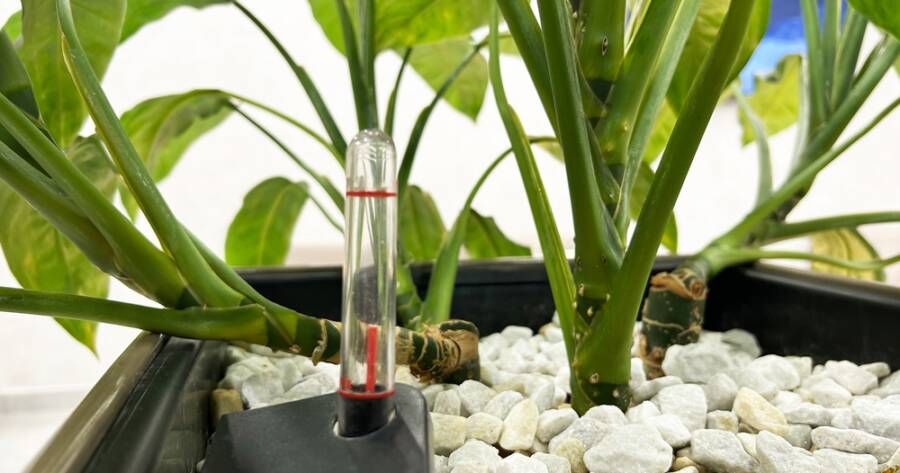Keeping indoor plants happy can be harder than it looks — especially when life gets busy. Many plant lovers in the U.S. struggle with overwatering, underwatering, or simply forgetting to water altogether. That’s where self-watering planters come in. Smart containers help keep your greenery thriving by delivering just the right amount of moisture over time. Whether you’re a beginner or a seasoned indoor gardener, self-watering planters can make caring for your plants easier and more reliable.
How Self-Watering Planters Work
At their core, self-watering planters use a simple water reservoir system. Instead of watering from the top, these planters allow plants to “drink” from below as needed. Most systems include a container for the plant, a separate chamber that holds water, and a wicking material or internal structure that draws water upward into the soil.
This setup mimics how many plants grow in nature, drawing moisture from deeper in the ground rather than being soaked from above. Because water is delivered gradually, the soil stays at an ideal moisture level for longer, which reduces the risk of root rot or dried-out roots.
Some self-watering planters include water level indicators so you can see when the reservoir needs a refill. Others use passive capillary action, requiring no electricity or pumps. With the right setup, plants can go several days — or even a couple of weeks — without hands-on watering.
Best Plants for Self-Watering Systems
Not all plants have the same water needs, but many popular houseplants thrive in self-watering containers. These systems are especially helpful for plants that like consistent moisture without being soggy.
Good candidates include:
- Peace lilies and pothos, which enjoy evenly moist soil
- Ferns, which often dry out quickly in traditional pots
- Spider plants, which benefit from a steady but moderate supply
- Calatheas and philodendrons, which are sensitive to drying out
- Herbs like basil, parsley, and mint, which often wilt without regular water
However, some plants — like succulents and cacti — prefer dry conditions and may not be suitable for standard self-watering planters. For those, it’s better to use pots with excellent drainage and water only when the soil is fully dry.
Features to Look for in a Self-Watering Planter
When shopping for a self-watering planter, it’s important to consider both the features and the form. Not all designs are the same, and the right choice depends on your plants, your style, and how much time you want to spend on care.
Look for:
- Visible water level indicators so you know when to refill
- Separate fill spouts that make topping up the reservoir easy
- Wicking systems that ensure even water distribution
- Drainage overflow protection, especially if you’re using the planter indoors
- Removable liners or pots that allow for easy transplanting and cleaning
Some planters are sleek and modern, perfect for minimalist interiors, while others offer more rustic or decorative designs to match traditional décor. You’ll find options made from ceramic, plastic, metal, or recycled materials — all with built-in water systems that reduce the guesswork.
It’s also worth considering the size of the planter. Larger containers hold more water and need less frequent refilling, but they also take up more space. For shelves, desktops, or windowsills, compact planters can be just as effective.
Tips for Getting the Most Out of Your Planter
Using a self-watering planter doesn’t mean setting it and forgetting it entirely. While they reduce the need for constant attention, a few simple practices can help you get the best results.
First, make sure the soil you use is suitable for self-watering systems. Many potting mixes drain too quickly, so consider using or mixing in a moisture-retaining blend with components like coconut coir or perlite. Avoid tightly packed soil, which can block water movement.
Second, give plants a full top watering when first placed into the pot. This helps moisten the soil and allows the wicking system to activate. After that, you can rely on the reservoir.
Check your plants occasionally to ensure the system is working as expected. If leaves look droopy or the topsoil feels bone dry, you may need to adjust. And don’t forget to clean the reservoir every few months to prevent algae buildup.
Let Your Plants Water Themselves
Self-watering planters offer a practical and stylish way to simplify plant care at home. By maintaining just the right amount of moisture, they help reduce common watering mistakes and support healthier roots, fuller leaves, and more vibrant growth.
Whether you’re building a lush indoor jungle or keeping a few herbs by the window, these planters let you enjoy the benefits of greenery without the stress. With a little setup and the right tools, your indoor garden can thrive — even on your busiest days.

